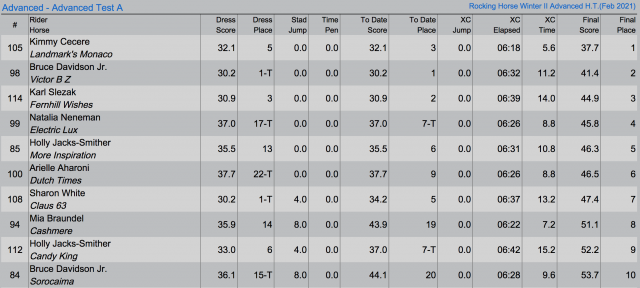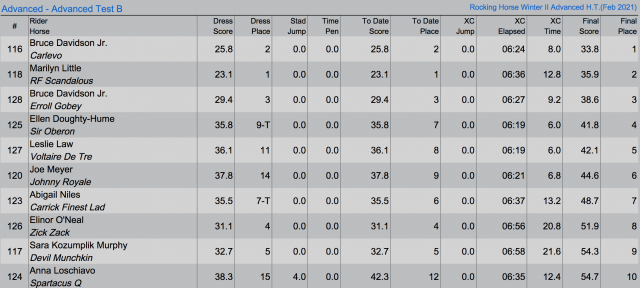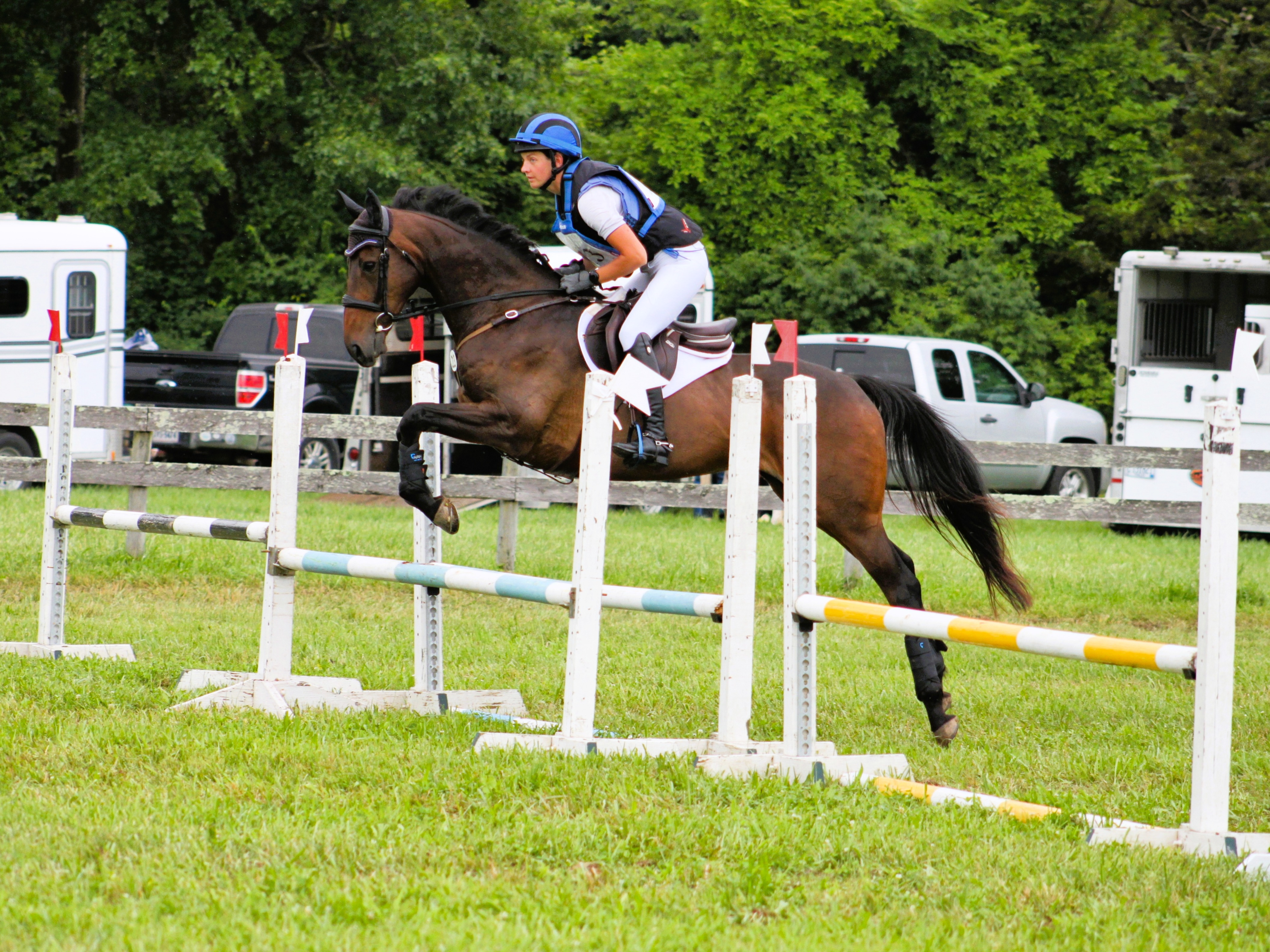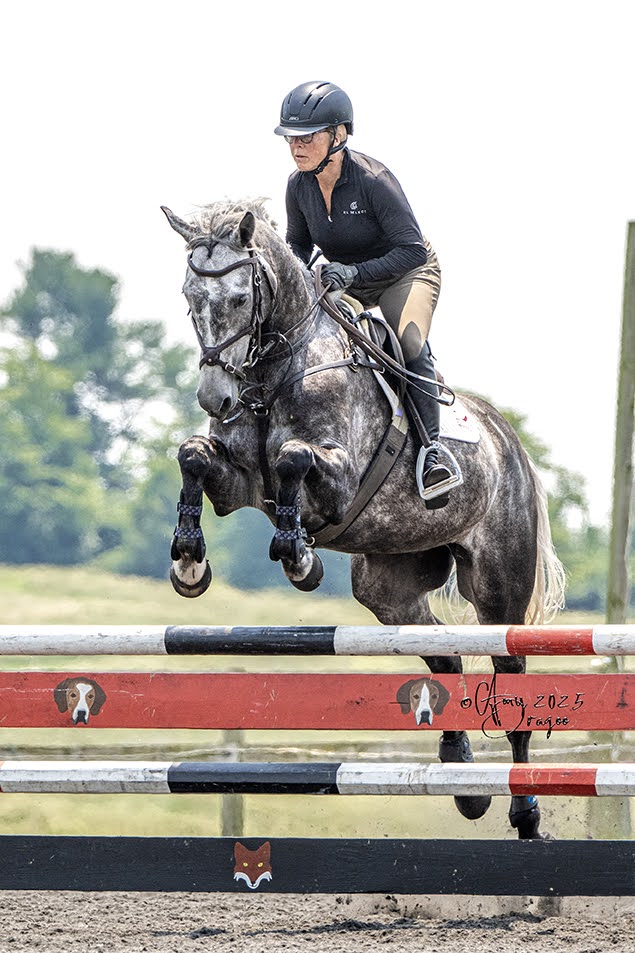We are pleased to welcome our newest guest columnist, Allison Kavey of Rivendell Dressage. Allison Kavey is an international grand prix dressage rider with a long-standing affection for teaching. Her eventing clients include professionals, such as Colleen Rutledge, and juniors and amateurs ranging from Beginner Novice and up. To read Allison’s detailed breakdown of Beginner Novice and Novice tests, click here. In this column, we take a look at the new elements introduced at the Training and Modified Levels.

Photo via Adobe Stock.
One of the things I really appreciate about the eventing dressage tests is how consistently they progress up the training pyramid. The questions asked in the Training and Modified neatly correlate with the expectations required for a horse competing at USDF levels and support the strength, flexibility, and scope needed to succeed jumping fences of 3’3” (Training) and then 3’5” (Modified) with additional technical and speed requirements. While the majority of the movements in these two levels are similar, there is a significant difference since the Modified tests are held in the large arena (20’ x 60’) while Training tests are in the smaller, 20’ x 40’ arena. This article breaks down the movements for these tests and provides some general thoughts on how to organize your geometry and school to prepare for your best possible performance.
There are three new trot questions in these tests that make it clear that you have stepped into deeper dressage water: 10-meter circles, leg yields, and lengthenings.

A diagram of dressage circles. Graphic via DressageToday.com.
10-meter Circles
I admit, I love 10-meter circles because they really require correct riding from the outside leg. If you use your outside aids to shape the circle, then your horse will remain balanced, not leaning in, and still nail the size. The key to getting this is practice.
Make sure you know exactly how big 10 meters is; set some poles as guidelines so you cannot get confused. Then, fervently devote yourself to repeating the following chant: “circles are round, not oval!” My first riding teacher, the amazing Mrs. Stanton of Tanglewood Farm in Jamesville, NY used to tell us that we would need to ride 1,000 circles of every size before we could do it proficiently – and then she would add with a grin that only the round ones counted.
The Training tests have half 10-meter circle questions. In Training A, make sure that you are going straight on the centerline for about two steps while you change your bend and then start the new half circle. For Training B, make sure the horse stays balanced between both legs as you complete the half circle and start your short diagonal back to the track. That exercise invites the horse to lean in, so be vigilant! Also make sure you look up and return to the track so that your horse’s shoulder is at the letter. There are no points for getting there early, and there certainly is no extra credit for a late arrival!

Isabelle Santamauro working on a head-to-the-wall leg yield under Peter’s watchful eye. Photo by Joan Davis / Flatlandsfoto.
Leg Yields
Leg yield tends to terrify people because it is SIDEWAYS, but I bet you have been doing it all along. Every time you have moved your horse sideways with your leg to get to the middle of a fence (or back on the centerline), you were leg yielding. The essential parts of a leg yield are not losing the forward swing of the trot and maintaining a relatively straight line with the shoulders no more than half a stride ahead of the haunches.
The haunches should not lead in this exercise; there should be minimal bend in the horse’s body as she progresses away from your inside leg. Use your outside leg and rein to keep the shoulders from getting too far ahead. If your horse tends to get over eager in her front end response, push her shoulders back toward the inside with your outside leg and then begin again. You can practice leg yielding anywhere in your arena, both away from and toward the walls. I also like to change the tempo within the leg yield to make sure my horse is ahead of my leg. This is an exercise that is exceptionally useful and should be a regular part of your schooling sessions.
The leg yield question in Modified test B is much more challenging than those in the other tests. You are required to leg yield from the wall to X, then back to the wall. This invites loss of straightness and tempo, especially when you get to the change of bend at X. To nail this exercise, you need to leave the wall one step before the corner before F, where you need to change your bend, and begin your leg yield one step before your horse’s shoulder reaches F. Perform your standard leg yield, aiming for two strides before X. This gives you time to be straight on the centerline and then change your bend before heading back to M. In that leg yield, your horse will begin lusting for the wall, especially as you near the quarter line. Keep your outside leg on to maintain straightness.

Holly Jacks-Smither and Candy King. Photo by Joan Davis/Flatlandsfoto.
Lengthenings
For everyone who has ever attempted to teach a still-growing baby mammoth — I mean equine — to lengthen and shorten the stride on the diagonal in a short arena, I salute you! The key to success for these young horses, including horses who are coming off the track, still growing, and developing their trots, is not to attempt to explode out of the corner like you are riding Totilas. Save that for later!
Especially when you are planning your move up to Training Level, take the trot exercises I mentioned in the last article, where you do many transitions within the trot, and start experimenting with them first on circles (you’ll need to do this anyway at the canter) and then on straight lines—quarter lines and diagonals – so you have to work to keep your horse straight, not the walls!
The key to a successful trot lengthening is to show length of stride and frame. Getting faster always means getting shorter. Work instead on gradually lengthening the step by adding leg while adding height to your post—this helps the horse differentiate between longer and faster. This is a great opportunity to work over cavalleti as well. Find your horse’s regular trot stride and set 3 or 4 poles in a row for that step. Set another 3 or 4 poles 2-3” longer. Then get brave and see what happens if you add another 2-3” over another set of poles.
The more you practice this, the easier the lengthening will get for your horse. Do not panic if the first few (or many) repetitions over cavalleti are not successful. If you are all rockstars at the gym the first day you attempt new exercises, please do not come hang out with me! Repetition will help your horse develop the strength and confidence to produce a clear lengthening of stride and frame.

Kurt Martin and D.A. Lifetime. Photo by Shannon Brinkman for Erin Gilmore Photography.
Canter Questions
There are three new canter questions in these tests: the canter lengthening on a circle, 15-meter canter circles, and the introduction to simple change (canter to X and then trot). I really loathe the eventing tests’ fondness for canter lengthenings on circles for two reasons: they invite motorcycling and tend to produce less good canter lengthenings.
Here is how to produce a good outcome for this quirky little exercise. Set up 4 poles on a 20 meter circle: one on each wall and one at each centerline. Develop your lengthening after you leave the first pole, maximize your lengthening for poles two through three, then begin to shorten after pole three in tiny increments so you will be back to the working canter by pole four. Remember the following: this exercise invites your horse to lean on her inside shoulder and lose the push and balance through her back and speed is not lengthening. Make sure you stay very squarely centered on your horse throughout and aim for the center of each pole so you can monitor her balance. If/when you feel her leaning in and down on the inside shoulder, use your inside leg to push her shoulders up and out. Half halt, rebalance, and proceed. It will get better, and as you practice, you will find your transitions to and from working canter will get more efficient and require less time. Remember you must be back at working canter BEFORE you return to the wall in the Training Level tests and Modified A. Modified B lets you lengthen on the wall, but you only get to do so for ¾ of the length of the wall. Maintain a slight shoulder-in throughout this exercise so that the outside hind leg remains available for the down transition.
My advice for the smaller canter circles is a lot like my advice for the smaller trot circles. Figure out the correct size and practice nailing it while maintaining your horse’s balance. The same is really true for the introduction to the simple change through trot.
Begin your diagonal in a normal canter and then start half halting at the first quarterline. Maintain a balance between your core muscles bringing the hind legs under and the shoulders up and your leg saying “keep cantering”. Two strides before X, allow your outside leg to move forward and soften your inside leg while adding a bit more core muscle for a gorgeous, uphill trot transition. Then do a 10-meter circle in either direction before proceeding across the rest of the diagonal. You need that 10-meter circle to make sure your horse really is balanced and uphill! This will help you prepare your next canter transition, which (gift from test writing gods here) is NOT at the end of the diagonal, giving you a bit more time and a friendly corner to help you nail that uphill transition.

Graphic via Equine Ink.
The Rein-Back
The other new movement in these tests is only in Modified B: the rein back. Everyone has their own method for teaching this. I do a lot of babies, so I start it on the ground when they are foals. Then I integrate it into their riding work once they reliably go forward from the leg. You can start it from the ground with an adult horse too, and it is not a terrible idea if you do not know if she can rein back.
A few easy mistakes to avoid: pulling hard and simultaneously on both reins, flinging both legs very far back, and leaning forward. Just experiment with your horse to see what works best. And practice trotting off after some rein backs to make sure that you can, as this exercise tends to discourage forward impulsion. I do not practice the number of steps required in the test every time, instead being happy with one or two good steps at first and then adding more as the horse gets more confident.
I hope that this has been a useful overview of the new questions asked in these tests. Remember that Modified B is a significantly more challenging test than the other three and looks a lot more like Preliminary than Training.The other three tests are quite similar and should be easily mastered with some practice and attention to detail. The same is true for Modified B, but it is one to approach with more caution and interest because it is an invitation to the higher level tests. Best of luck!

Allison Kavey. Photo by Annan Hepner/Phelps Media Group.
International Grand Prix competitor Allison Kavey founded Rivendell Dressage, Inc. in 2007 with Andrea Woodner. Allison has extensive experience teaching dressage riders from Training Level up to Grand Prix, working on position and basics to improve riders’ harmony with their horses. She also works with eventers through the CCI***** level and hunter/jumper riders looking to improve their position and flatwork. In addition to training and coaching her students, Allison develops and sells young dressage horses of exceptional quality. RDI horses have achieved many national championships and multiple top 20 placings in the USDF national standings since 2007.



































